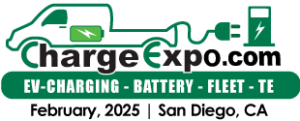Presented at EUEC 2015: San Diego, CA. (Session A1 & A2)
 A1.1 Regulatory Update
A1.1 Regulatory Update
John Kinsman, Sr. Director – Environment, Edison Electric Institute
 A1.2 The Post-Clean Power Plan Coal Fleet and Compliance with Other Air, Water & Waste Rules
A1.2 The Post-Clean Power Plan Coal Fleet and Compliance with Other Air, Water & Waste Rules
Jay Holloway, Partner, Sutherland Asbill & Brennan LLP
As coal unit operators finalized plans to comply with the MATS, NAAQS, 316(b), ELG and CCR rules,
EPA proposed the 111(d) rules with the CO2 target to be achieved primarily from the reduction in coal
generation. How can coal unit operators commit the capital to comply with all of the new rules given
the Clean Climate Plan forcing generation from coal to natural gas combined cycle, nuclear and
renewables?
 A1.3 Strategic Implications of New Environmental Rules
A1.3 Strategic Implications of New Environmental Rules
Block Andrews, Strategic Environmental Solutions Director, Burns & McDonnell
Over the course of 2014, several environmental regulations are either going to be proposed or finalized
that will affect the power industry. The proposed rules include the existing source Greenhouse Gas
New Source Performance Standards & the Data Requirements Rule. Several rules are expected
to be finalized such as the Section 316b of the Clean Water Act & Coal Combustion Residuals rule.
The presentation will discuss potential implications of these rules on the power sector. Some of the
implications that will be discussed are the anticipated regulatory impacts on the fossil fuel generation
fleet from a cost, reliability, & compliance risk standpoint.
 A1.4 Expert Testimony at Adjudicated Permit Hearings
A1.4 Expert Testimony at Adjudicated Permit Hearings
Gale Hoffnagle, Senior Vice President & Technical Director, TRC Environmental Corporation
Almost every project for new emission sources is now contested. Whether in comments to
environmentally sympathetic regulators, or a contested case hearing in front of an Administrative Law
Judge or as far as a Federal lawsuit, project developers should be aware of the extra time and effort it
will take to defend your permit to construct and operate. The interveners will demand that permitting
steps be followed to the letter of the law and that environmental causes be considered. These steps
include: The Best Available Control Technology; That one year’s worth of preconstruction monitoring
be required to establish the “background concentrations” of pollutants; That modeling for secondary
formation of ozone or PM2.5 be provided; That emissions during start-up and shut-down be considered
and controlled; That national parks and Wilderness areas be protected; That maximum emissions
monitoring be required. Beyond those demands, the interveners will try to find any and all procedural
or technical issues which will stop, delay or make the project too expensive.
 A1.5 NSR 2015 – New & Continuing Challenges for Electric Utilities
A1.5 NSR 2015 – New & Continuing Challenges for Electric Utilities
Kenneth Weiss, Partner, ERM
USEPA’s ongoing NSR efforts present numweoua technical challenges to the electric utility sector.
Numerous issues surround the short-term NAAQS and related air quality demonstrations that can
sifnificantly impact proect schedules and compliance determinations. Evolution in long-standing
policies regarding emissons increase determinations and the treatment of issues such as SSM related
emissions need to be understood to fully understand NSR program impacts on utilities. These issues and
others will be explored in this paper which will focus on the technical impact of recent NSR decisions
and actions.
 A1.6 UARG v. EPA: What does it mean for EPA’s GHG Regulatory Program?
A1.6 UARG v. EPA: What does it mean for EPA’s GHG Regulatory Program?
William Wehrum, Partner, Hunton & Williams
The U.S. Supreme Court ruled in Massachusetts v. EPA that greenhouse gases are susceptible to
regulation under the Clean Air Act. In response, EPA has launched an aggressive and expansive
CAA-based GHG regulatory program. The Court in UARG v. EPA reined in EPA’s initial efforts. This
presentation will explore what UARG means for EPA’s ongoing GHG regulatory efforts.
 A2.1 Proposed Clean Power Plan Regulation, Strategic Response for State and Utility Compliance
A2.1 Proposed Clean Power Plan Regulation, Strategic Response for State and Utility Compliance
Michael Cashin, Environmental Policy Advisor, Minnesota Power(ALLETE)
Minnesota Power (ALLETE)’s EnergyFORWARD strategy provides for a shift from predominately coal
based generation in 2005 to a more balanced mix of 1/3rd each renewables, natural gas and coal
going into the 2020s. The USEPA is proposing their Clean Power Plan that applies Clean Air Act authority
under Section 111 to regulate CO2 emissions from new, reconstructed/repowered and existing electric
generating units. Minnesota has also been implementing a renewable portfolio standard and energy
efficiency program that has applied targeted deployment of renewable energy and customer
conservation measures that also have the effect of reducing the greenhouse gas emissions related to
Minnesota electricity service. The challenges and synergies of these ongoing State regulations, utility
strategy enactment and EPA’s proposed greenhouse gas regulations will be presented as they relate
to Minnesota electricity customer service.
 A2.2 Coming Soon to a Utility Near You – The Social Cost of Carbon. . .
A2.2 Coming Soon to a Utility Near You – The Social Cost of Carbon. . .
Ron Crum, VP, AECOM
The Social Cost of Carbon (SCC) is a cost estimate of the economic damages caused in the future,
often 300 years, associated with a small increase in GHG emissions, conventionally one metric ton
(tonne), in a given year. Said another way, the SCC estimates the benefit society will gain, expressed
in monetary value, by avoiding the damage caused by each additional tonne of CO2 released into
the atmosphere. Intended to be a comprehensive estimate of climate change damages & includes,
but is not limited to, changes in net agricultural productivity, human health, & property damages from
increased flood risk. New types of damages are being added with each computer model revision.
Perhaps the most important number you may have never heard of. SCC has already become a
very important policy tool for USEPA, USDOT, & USDOE in the coming years & a keystone of future
climate policy. USEPA uses the SCC to estimate the climate benefits of rulemakings. SCC is a new
tool being used by USEPA & USDOE to justify a host of regulatory actions & new government subsidies/
taxes/surcharges. Future use will likely be aimed MUCH more directly at emitters of fossil fuels. A midsized,
coal-fired power plant with emissions of ~10 million tons/yr of CO2, equates to $400 million/yr in
damages due to “social costs.” The NPV (benefit) of shutting a mid-sized coal-fired power plant down
for the next 100 years is an astronomical $100 billion in false “savings.”
 A2.3 Greenhouse Gas Performance Standards for Power Generation: A Survey of Issues & Approaches
A2.3 Greenhouse Gas Performance Standards for Power Generation: A Survey of Issues & Approaches
Jeff Chaffee, President, Bison Engineering, Inc.; Kevin Matthews
You may have heard. The current administration wants us to become international leaders in reducing
greenhouse gas (GHG) emissions. & the power industry has been drafted to help lead the charge.
The draft card has come in the form of proposed EPA performance standards that would severely
restrict designs for new coal- & gas-fired power plants & require states to develop plans to limit GHG
emissions from existing power plants. The state plans must conform to general EPA guidelines & be
submitted to & approved by the EPA following an extremely aggressive schedule. This presentation will
provide an overview of challenges & potential solutions from across the country but with a focus on
the Northwestern states.
 A2.4 Policy Architecture & the Clean Power Plan: Solid Foundation or House of Cards?
A2.4 Policy Architecture & the Clean Power Plan: Solid Foundation or House of Cards?
Marc Chupka, Principal, The Brattle Group
The June 2013 proposed Clean Power Plan was always “Plan B” since most serious climate policy
analysts had warned that the Clean Air Act was structurally ill-equipped to address greenhouse gases,
and that a comprehensive approach requiring Congressional action was preferred. Even proponents
of comprehensive solutions used the threat of EPA action under the Clean Air Act as motivation for
Congress to act. This presentation examines the structure of the Clean Power Plan, with particular
attention to the relationship between the state emission rate targets and regional electricity markets;
the limits of traditional state regulatory authority; the prospects for state or regional policy mechanisms
to comply with those targets; and the risks assumed by states and utilities under different compliance
approaches.
 A2.5 Potential Impacts of EPA’s Proposed GHG rule on PJM
A2.5 Potential Impacts of EPA’s Proposed GHG rule on PJM
Gary Helm, Lead Market Strategist, PJM Interconnection
EPA’s proposed rule that addresses carbon dioxide emissions from existing fossil fuel-fired generating
units is extremely broad and complex, and as such has extensive implications for PJM and regional
grid operators in general. The results of PJM’s analysis of the proposal will be discussed, as well as the
potential impacts to grid reliability, markets and planning.
 A2.6 GHG Regulations for Everyone – Not Just Utilities
A2.6 GHG Regulations for Everyone – Not Just Utilities
William Campbell, Principal Engineer, Environmental Consulting & Technology, Inc
EPA has been very careful to state that the new proposed Green House Gas regulations are only for
Utilities. Don’t be fooled. This paper will show you the back door that EPA is pushing open to welcome
industry and even mobile sources to the party of GHG reductions.”

